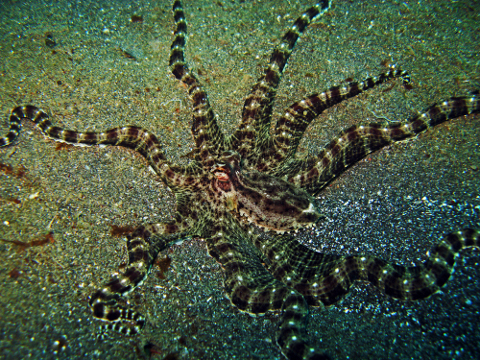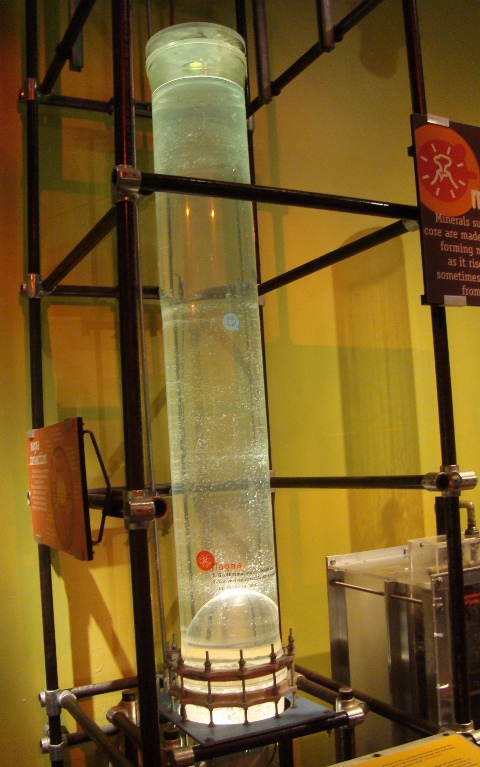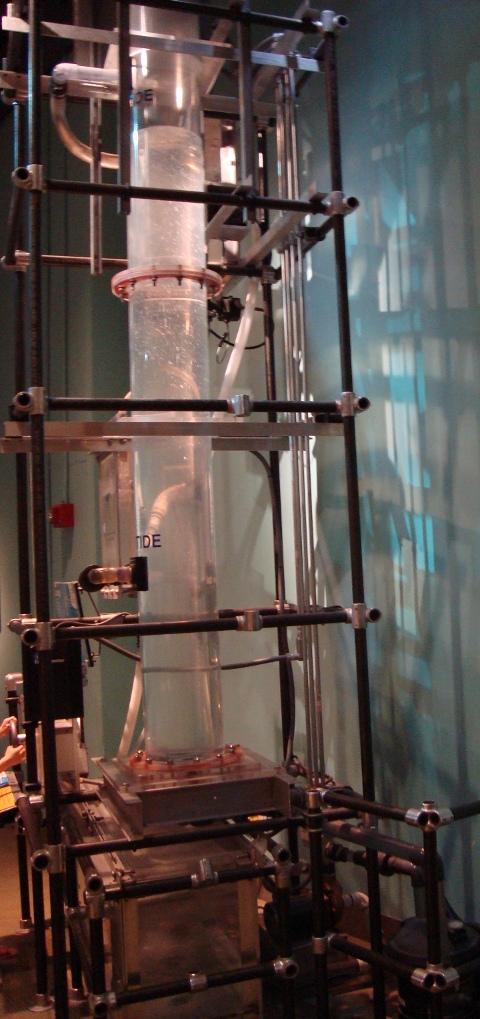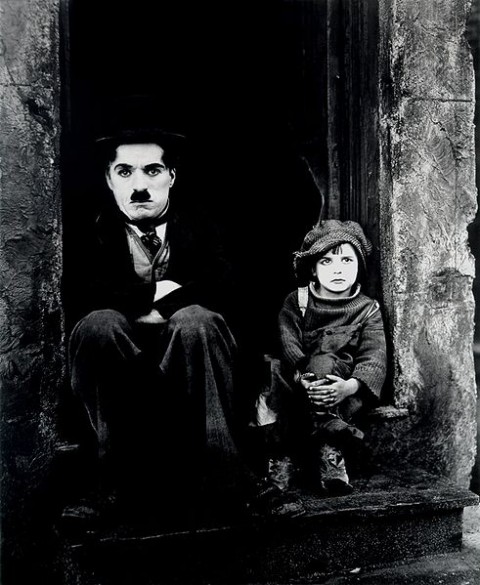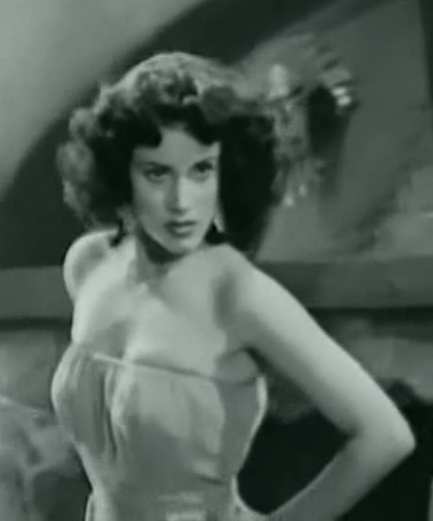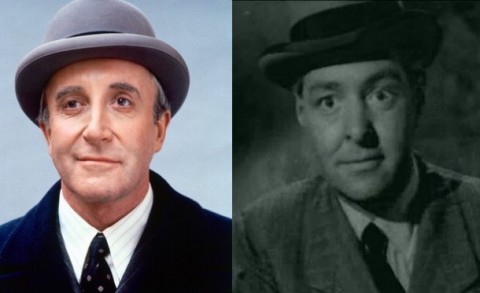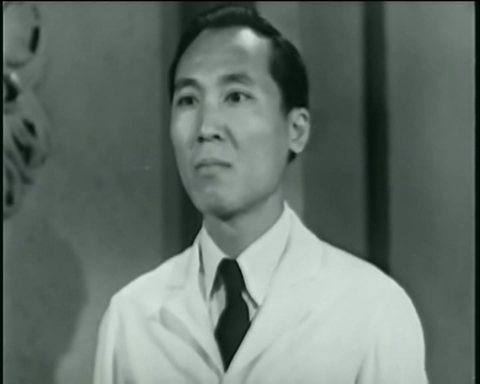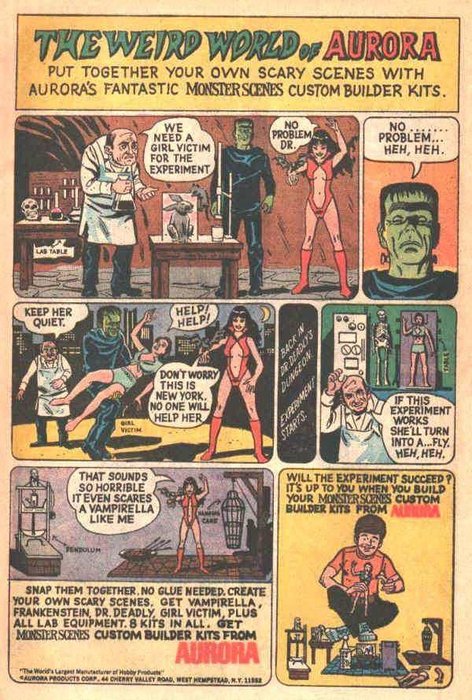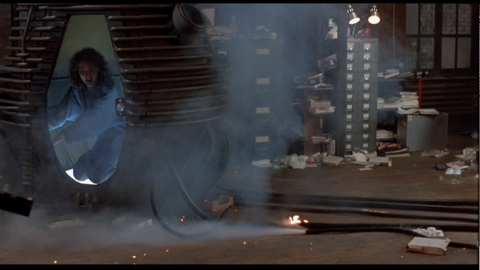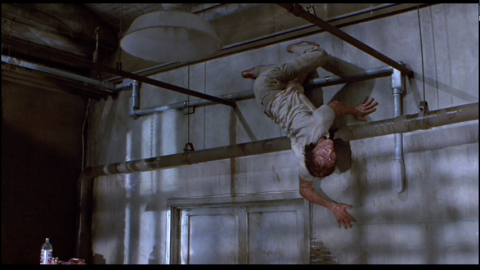Script for today
Page 10
|
Dr. Sin’s lab, full of men in full biohazard suits, collecting evidence, monitoring stuff with geiger counters, etc. CAPTION (Shackleford speaking): Since clearly this was something beyond local law enforcement, a call was put in to us… |
One man in a biohazard suit looking up at a gurney that tilts up. Another holding a bunch of wires, apparently puzzling over which goes to which. CAPTION (Shackleford speaking): Unfortunately it was somewhat beyond us as well…. |
|
Three men standing around a video monitor. They are in biohazard suits, but they have removed the hoods so that we can see their faces. They are facing us, but are looking down at a computer monitor showing something. CAPTION (Shackleford speaking): We did find out something about what was going on. Dr. Sin was recording his activities…. |
A view of the monitor. A vague outline of a a nude female form upright, tied to a cruciform gurney. Something that looks like tentacles are starting to sprout from her midsection. CAPTION (Shackleford speaking): …and selling them to a certain select audience. There are perverts who are into this sort of sick transformation stuff… |
|
A PROSPEROUS-LOOKING MAN being led away from his McMansion in handcuffs by two burly police officers. His head is bowed with shame. In the background, his JUNE CLEAVER-ISH WIFE looks on, her hand to her face in shock, while his BEAVER CLEAVER-ISH son holds on to his mother. CAPTION (Shackleford speaking): This led to some interesting arrests…. |
The same man in an interrogation cell. A SLICK ATTORNEY sits by his side. The man looks defiant, with his jaw set. The attorney is holding up his hand dismissively. A DETECTIVE is leaning forward, gesticulating angrily, looking frustrated. CAPTION (Shackleford speaking): But the sort of people Dr. Sin sold to either know nothing or will say nothing… |
Page 11
|
View of a pile of optical disks, sitting on a table next to a computer. CAPTION (Shackleford speaking): We have been going over all this for weeks, but all we find is a lot of data that does not make sense…. |
View inside one of the tanks. The girl/octopus is cowering in the corner. CAPTION (Shackleford speaking): And what we presume were the results of Dr. Sin’s experiments… |
Close up on Edith. She is wearing a stunned, half-horrified expression. |
|
View of Shackleford and Chen, close up. CHEN: You’re the top expert in the field, Professor Sterling. |
View of Edith, her hand covering her eyes, head bowed down. EDITH: What makes you think I could even help here… |
Close-up view of Shackleford’s hand, he is pulling a fat looking file off a table. CAPTION (Shackleford speaking): We’re not sure, but take a look at this… |
|
Another close up. The file being held by Edith. We see one page in particular, a photograph of a happy-looking teenage girl, clipped to a form. CAPTION (Shackleford speaking): Her name was Felicity Bates…she was 17 years old…with a mother and a father… |
Very close up view of the Octopus girl’s eyes. They look large and sad. CAPTION (Shackleford speaking): She played oboe in her school orchestra…won a scholarship to Smith…now look at what’s left of her… |
Edith standing by the desk with the optical disks. She is holding one up, looking at it. CAPTION (Shackleford speaking): We only hope someone can do something, Professor Sterling. |
Page 12
|
Edith is standing , her back toward us, looking down at a work table. The table is neatly covered with folders of some kind. CAPTION (Edith thinking): This is far and away the most depraved thing I have ever heard. |
Close up view of a folder. It is a dossier of some kind. A photograph of a s smiling teen-age girl is clipped to the top of the folder. CAPTION (Edith thinking): Kidnapping pretty girls…to turn them slowing into octopuses… |
A laboratory bench, with a centrifuge and several racks of test tubes. Edith in a hazmat suit, holding up a test tube. CAPTION (Edith thinking): From the equipment Dr. Sin left behind I can make an educated guess as to how he did this. |
|
Close up view of a the membrane of a human cell, with a virus making contact with the membrane. CAPTION (Edith thinking): With a proper engineered virus you can change the DNA of a cell from one thing to another. |
Electromicrograph of a ribosome, with a spark on the side. CAPTION (Edith thinking): Hit ribosomes with the right quanta at the right time and you can turn anything into anything… |
An elephant in a patch of flowers. CAPTION (Edith thinking): He could have turned girls into elephants or petunias if he had wanted to… |
|
Edith and Chen standing in front of a screen, examining it. CAPTION (Edith speaking): But that’s not the really revolting thing. Sin left something unchanged… |
Close up view of part of an octopus brain brain CAPTION (Edith thinking): Chen and I did a fMRI scan on the brain of one of the octopuses… |
View of neurons in a brain. CAPTION (Edith speaking): Superficially it looks like any other octopus, but the deep neural structure… |
The notion that one could change one organism into another through “delivery of the right quanta at the right time” might sound like an especially psychotic piece of mad science, but I actually found it in a very well-known source, to wit John Tooby and Leda Cosmides‘s essay “The Psychological Foundations of Culture,” in The Adapted Mind: Evolutionary Psychology and the Generation of Culture (New York and Oxford: Oxford University Press, 1992). See for yourself



